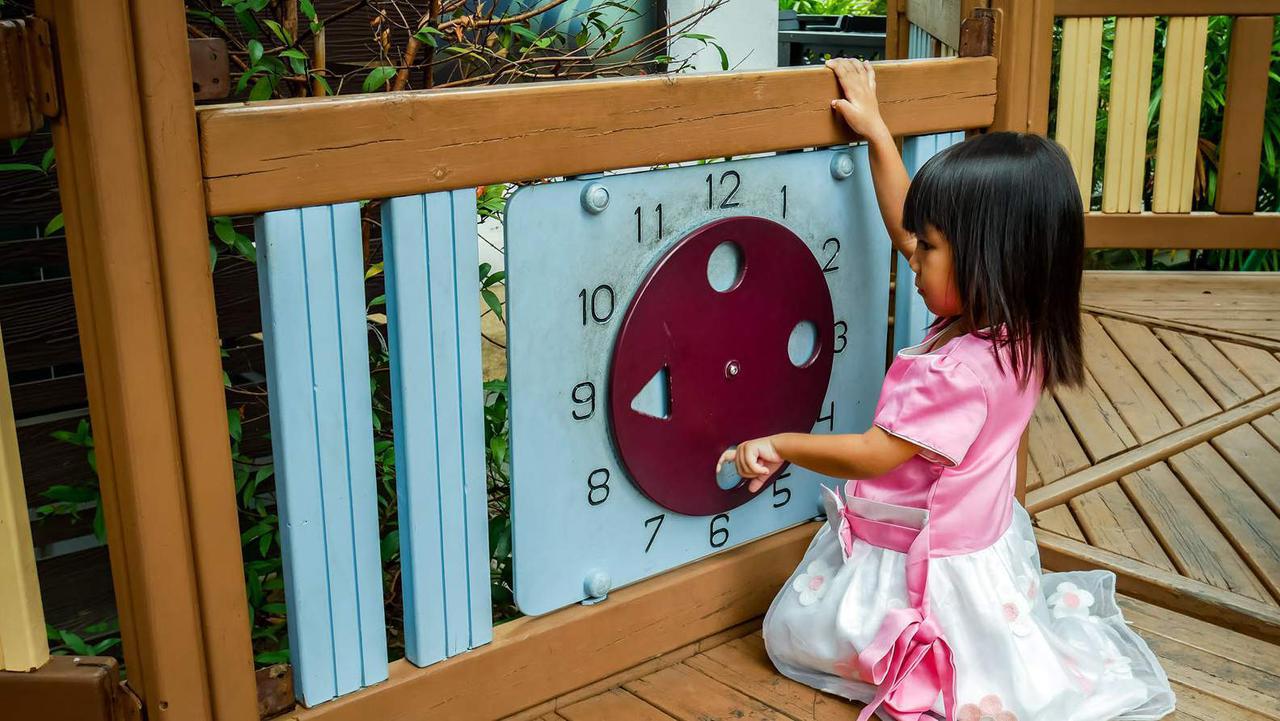
Learning to tell the time is a milestone in a child’s education, as it’s a difficult skill that can take years to master and reflects their development journey. Even before they learn to read the time, parents can support children to begin to learn about the concept of time, which can help them to understand the daily and weekly routine, and encourages cooperation for transitions throughout the day.
Because time is an abstract concept and requires a certain level of comprehension, children will be ready to learn this skill at different ages, but whenever they are ready it’s helpful to know how to support their learning process - to make that easier for you, we’ve made this guide on how to teach kids to tell the time.
Concept of time
Children begin learning about time from an early age, as they are already taking in how we talk about time and watching how we apply it to our daily life from the moment they’re born. Even though time is an abstract concept that children won’t fully understand for a long time, they will form a subconscious awareness of how time works and this will help when they get to the nuts and bolts of learning to tell the time.
As they get older, you can begin to assist with this process, by demonstrating how time applies to situations in their everyday life, which in turn will help your child build on their self-help skills.
Here are some ways to do this:
- Time duration- explaining that brushing teeth takes two minutes (you could even set a timer and they can watch the minutes count down as they brush).
- Point out what the time is when events take place during the day: ‘Can you see the hands on the clock there? It’s telling me it’s 8:30 which means it’s time to leave for childcare.’
- Show them where the hands of the clock are when they can get up from their bed to play, or when it’s time for dinner/snack and they’ll be motivated to learn
- Explain that a car trip will take you 15 minutes, showing them what the clock looks like at the beginning and end of the journey.
When is your child ready?
While it will vary, children are generally ready to begin learning about how to tell the hour on an analogue clock and via digital clock around 5-6 years old.
Here are the guideline goals for different age levels:
- 5-6: learn to read and write the hour hand, on the hour and half-hour.
- 6-7: be able to tell and write the time to 5 minutes, and know how many minutes in an hour, and how many hours in a day
- 7- 8 and up: should learn about how many seconds in minutes, be able to tell and write to the nearest minute and have mastered the correctly applied vocabulary
Once kids have mastered these skills, they can also begin learning to read Roman numerals on a clock and the difference between 12 hour and 24 hour clocks, and eventually be able to convert time between these.
Teaching your child
Most children will be in school when they begin learning how to tell the time, where a teacher will guide them through the process, but parents can prepare kids and help them practice these skills at home. Children learn best through play and real-life applications, so finding games, songs and rhymes about time will help, as will finding situations they can apply their time knowledge to.
Incorporating play with analogue clocks helps children familiarise themselves with how clocks work, and the concept that time is constantly moving (ideally a clock with a second hand that ticks so they can see/hear it). You can also make clocks out of paper plates: draw on the numbers, let your child choose the time and then draw the clock hands on so they can see what it looks like.
You can begin teaching by using your child’s daily routine as an example, through making a timeline of their day. Divide the day into hours, and draw pictures of what happens at each hour of the day. Next, you can print out or draw a clock above each time slot so they can get a visual representation of what the hours look like on a clock face, and how that relates to different times of the day.
When it comes to reading a clock, it will take kids longer to understand seconds and minutes, so begin by concentrating on the hour hand. Make clocks with a moving hour hand, divided into triangles of different colours for each hour. This helps kids grasp the concept of hours, and that the hour hand points to the number that tells you what hour it is. Once they’re comfortable with this concept you can move on to incorporating the minute hand - it helps if they are able to count from at least 1-60 when it comes to breaking down hours and minutes, so be patient with this skill.
Now that you’ve got some ideas on how to teach kids to tell the time, you’ll be prepared when the time comes to make learning fun and applicable. Remember that children learn at different ages and at different rates, so take it slowly and be led by your child’s progress.
Children learn many life skills at childcare, so search Toddle to find a childcare centre near you.